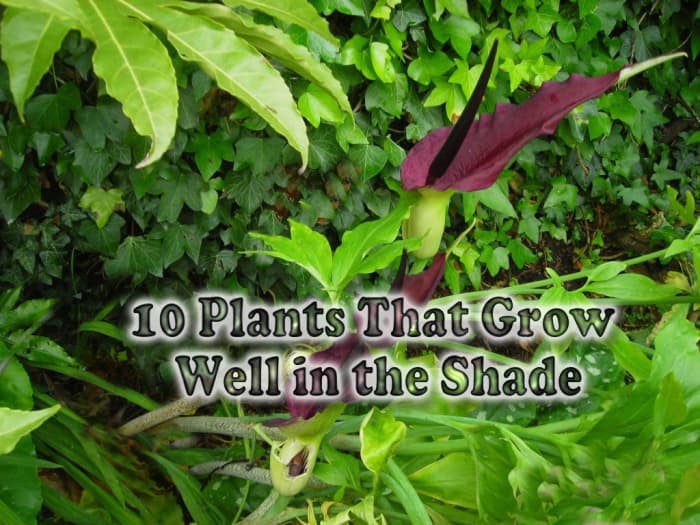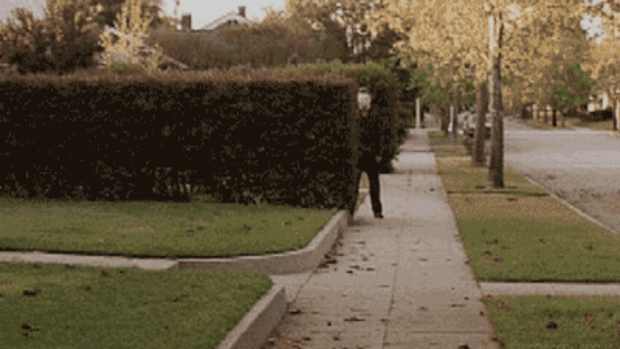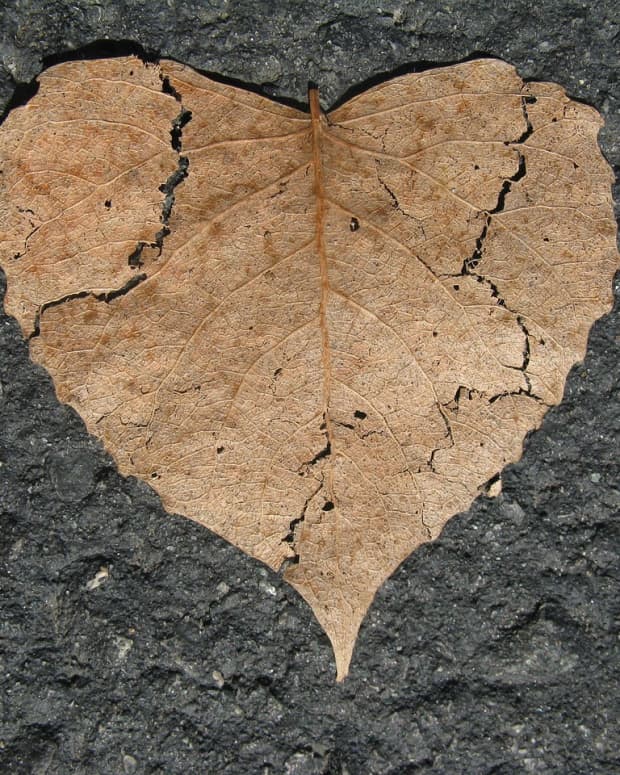10 Plants That Grow Well in the Shade

This black lily in full bloom is just one of many plants that loves shade. This article will list numerous other shade-tolerant plants that you can grow in your own garden.
Diana Grant
Which Shade Plants Should You Choose?
Many new gardeners bemoan having too much shade in their garden. This is understandable if they just wanted to sunbathe, but if you think that nothing much will grow in the shade, think again. I will show you how to choose appropriate plants that will gladden your borders throughout the year.
With thanks to the many readers who gave their suggestions, here is a preview of the 10 shade-loving plants that I'll be going over in this article:
- Astilbe
- Lily-of-the-Valley
- Hostas
- Busy Lizzie or Impatiens
- American Wood Lily or Trillium Grandiflorum
- Columbine or Aquilegia
- Jack-in-the-Pulpit or Arisaema Candidissimum
- Anemone
- Epimedium
- African Daisy or Dryopteris Erythrosora
1. Astilbe
Astilbe come in a range of colours, including white, pink, mauve and red. They grow to a height ranging from about 6 inches (7.5 to 10 cm) to 3 feet (1 m) tall, depending on the astilbe variety. and flower in summer with glorious plumes.
They are quite at home in full shade or dappled shade. Their small leaves are very ornamental and give a good show, even when the plants are not in flower. The leaves turn brown and die back in winter, and new leaves begin to unfurl as spring advances. There are also about 18 different varieties of Astilbe.
2. Lily-of-the-Valley
Lily-of-the-Valley (Convallaria majalis) is a small perennial woodland plant that grows about 6 to 10 inches (15 to 30 cm) high from rhizomes. It flowers in late spring but will flower early if the winter has been mild; in my London garden, it recently flowered in May. The flowers are like delicate little bells of white tinged with green. So pretty!
According to my research, they can become a bit invasive. Unfortunately, this has never been the case in my garden, and until this year, I have found them a bit difficult to grow. This could be because I have tried to grow them in the sun on my rockery, and perhaps they just didn't like that position.
This year, I tried growing them in full shade in a pot that I kept well watered. They were far more successful than the rockery group.
3. Hostas
Hostas are grown as much for their broad ornamental leaves as for their somewhat insignificant, short-flowering blue or white flowers. Various types grow from 2 ins.(5 cm.) and 4 to 6 ins. (10 to 15 cm.) wide, to giant hosta varieties which reach 60 inches (152 cm.) tall and 48 inches (122 cm.) across.
They are perennials that start producing their clump of leaves in late spring to early summer and die off in autumn. The leaves vary in colour from pale green or yellowy green in some types, to very dark green or blue-green in other types, or even variegated stripes. They make good ground cover in the shade and also make very ornamental pot plants when planted up in large containers.
Sadly, slugs and snails love them and can wolf down the lot in one night. I have even bought some that were said to be "slug-resistant," but they certainly weren't, and they just went the same way as the others. This can be very annoying if you have paid a lot for them. Not all gardens have a lot of slugs, and you might be lucky.
In my garden, I have found the secret is to grow the hostas in large planters with a copper ring round the outside, which stops slugs in their tracks. You can buy the strips of metal at garden centers.
4. Busy Lizzie or Impatiens
Impatiens grow in various shades of white, pink, salmon and red and can brighten up a dark and shady border. They do need some sunlight but will tolerate partial shade. They grow from 12 ins. (30 cm.) to 3 feet (91 cm.), depending on the variety, with a similar spread.
They are long-flowering and usually treated as annuals, although in warmer climates they may be perennials. As they like warmth, they should not be planted outside until late spring. They rarely need deadheading. But if they look straggly, you can cut them back a little, and they will sprout new flower heads and last from spring to autumn.
5. American Wood Lily or Trillium Grandiflorum
Also known as large white wood lily, snow trillium, wake robin or white wake robin, Trillium grandiflorum is a perennial plant that grows vigorously in full or partial shade. It grows from rhizomes in a large clump with erect stems, which bear just one white flower with three petals up to 10 centimetres across. It grows in spring to about 6–9 inches (10–15 cm) high, with a similar spread.
It needs a sheltered position and likes moist but well-drained, humus-rich soil, mulching with leaf mould in autumn. As propagation by seeds takes several years to mature, it is preferable to divide the rhizomes after flowering.
Trilliums do not need pruning and are normally disease-free, but they are liked by slugs and snails.
6. Columbine or Aquilegia
The flowers of columbines or aquilegia range through white, yellow, pink and mauve, with many different combinations. Aquilegia are perennials with long, leafy stems that bear flowers with spurs. The plants are hardy and will grow in half-shade or sun. They grow to about 1 foot high (30 cm) and flower in late spring to early summer. You can grow them from seeds sown in pots in spring and transplant them into fertile and moist, but well-drained soil. They look good in a rockery as well as in flower beds.
Aquilegias are very pretty and one of my favourite plants. They self-seed and, once established, the number of plants increases year by year.
7. Jack-in-the-Pulpit or Arisaema Candidissimum
Jack-in-the-Pulpit are perennial bulbs that are not fully hardy and sometimes need protection in winter. They grow in full sun or partial shade and like a sheltered position. The bulbs should not be allowed to dry out over winter when dormant. They like a moist, well-drained soil and can be propagated by seeds sown in autumn or spring.
They grow from 1 to 2 ft (30 to 60 cm) tall. Their white, hooded spathes can be striped pale pink with a greenish tube and grow to about 4 ins. (10 cm) in length, appearing in summer. The flowers are carried on long, upright stems that grow to about 1 foot high, followed by a spike of red berries in autumn.
Jack-in-the-Pulpit look good in informal gardens, flower borders or as underplanting of roses and shrubs. They don't need to be pruned, but they are susceptible to slugs and vine weevil.
Note: These plants are toxic and can cause skin or eye irritation or severe discomfort if eaten.

Jack-in-the-Pulpit are not-quite-hardy perennials that sometimes need protection in winter but often come with mesmerizing stripe patterns.
8A. Anemone de Caen
Anemone de Caen will grow in partial shade—provided there is plenty of light—though they do best in a sunny spot. They need a sheltered place, well-drained soil and compost or manure. They bear very brightly coloured red, white, pink and purple flowers in June and may bloom for several months.
They are ideal for planting in borders, rockeries and tubs. They grow to about 8 to 10 inches (20 to 25 cm) high. They are also good as cut flowers and will last for 7 to 10 days.
Plant the tubers with the pointed end upwards, soaking them overnight first. If you plant them in autumn, protect them by covering with straw or dead leaves.
Note: Although people say that Anemone de Caen is easy to grow, I have never had much success with them. This is not through want of trying, as I love them. But clearly, I have not given them the appropriate conditions to flourish. I can only warn you to follow the growing instructions carefully when you buy them.
8B. Anemone Japonica
These are my favourite anemones—the colors are more subtle than that of their little cousins.
Once established, these perennials spread by suckers and self-seeding. They need to be kept strictly under control if you don't want them to take over the whole garden. But they are what I call good-value flowers, as you'll find them blooming from mid-summer to November or even December if the weather is mild. The leaves are attractive in their own right, so the plants look ornamental even before the flowers develop.
They grow to about 3 to 4 feet (3 to 3.1 m) tall. So remember not to plant them in the front of your flower borders.

Anemone Japonica can spread quickly through suckers and self-seeding. So keep an eye on their growth—unless you want them to take over your whole garden.
Diana Grant
9. Epimedium
Epimedium are forest plants and need moist, free-draining, humus-rich soil and shade. They grow about 8 to 12 inches (20 to 30 cm) high and take a couple of years to reach full height.
Their new leaves are tinted in bronze, copper and reds, turning purple and red in autumn in some varieties. Apply a mulch to protect new growth from frosts.
10. African Daisy or Osteospermum
A spectacular flower, African Daisy opens during the day and closes as it gets dark. Care instructions from most plant sellers state that it is a half-hardy perennial that needs full sunlight. But mine have done well in half-shade (with sunlight for just part of the day) and have lived on for several years in spite of frost, but in a fairly sheltered position in my front garden.
They are long-flowering, from June to October and grow to a height of 8 to 24 inches (20 to 60 cm).

African Daisies are long-flowering plants, beginning in June and continuing on to October.
Diana Grant
Bonus: Buckler Fern or Dryopteris Erythrosora
If you're looking for one more shade-loving plant, consider Dryopteris erythrosora. They are hardy ferns that grow in partial or full shade and prefer moist, heavy soil or clay. They grow to about 12 inches (30 cm) high and spread a similar amount. The fronds are coppery red when emerging and mature to dark green, dying back in winter.
They need a lot of water and will benefit with the addition of compost or well-rotted leaf mould.
More Plants That Love the Shade
If you're looking for even more shade-loving plants for your garden, feel free to check out my other two articles on the subject:
Quick Shade-Growing FAQ
Can daisies grow in the shade?
It depends. Most daisies prefer full sun for optimal blooming. For example, Gerbera daisies require full sun exposure. However, Shasta daisies (Leucanthemum x superbum) are a shade-tolerant daisy variety and can grow in partial shade. English daisies (Bellis perennis) also thrive in similar conditions.
However, daisies generally perform best and produce the most abundant blooms when grown in full sun, which is at least six hours of direct sunlight per day. Too much shade can result in fewer flowers and leggier, stretched-out growth as the plants try to reach for sunlight.
Can busy lizzies grow in the shade?
Yes, but busy lizzies (Impatiens walleriana) prefer partial shade over dense shade. This typically means 3-6 hours of direct sun per day, though be vigilant in warmer climates. Direct, intense sunlight can burn their leaves and too much heat in general will stress the plant. That said, some newer hybrid varieties, like the Sunpatiens series, have been bred to tolerate more sun, so check with your local nurseries.
Ideally, your busy lizzie gets direct sun in the morning, some filtered light thereafter, and afternoon shade. That combination is ideal for promoting abundant blooms throughout the summer.
Rhs Encyclopedia of Plants and Flowers
This content is accurate and true to the best of the author’s knowledge and is not meant to substitute for formal and individualized advice from a qualified professional.
© 2011 Diana Grant
Comments
Diana Grant (author) from United Kingdom on April 10, 2020:
I find that gardening is a good way of unwinding
Gina Tibas Palomata on March 30, 2020:
I really like gardening. I have also variety of plants. But sometimes, it lacks of care because I am busy. In fact, when there are no classes I try my best to take of them.
Diana Grant (author) from United Kingdom on May 07, 2016:
I also grow lots of plants indoors - it's important to choose their position in order for them to flourish - some like to be in a sunny window and others prefer to be away from the sun
Diana Grant (author) from United Kingdom on May 07, 2016:
And thank you too - this is the sort of reply that inspires me to write more articles
Chitrangada Sharan from New Delhi, India on May 05, 2016:
Very informative and educational hub about gardening !
I enjoy gardening and growing plants. But I do not have much space in my flat. I satisfy my hobby by growing plants in some earthen pots. Would like to try some of your useful and helpful tips. Beautiful pictures and well presented hub.
Thanks for sharing your knowledge!
Dora Weithers from The Caribbean on May 02, 2016:
Very interesting, informative -- and inspiring. It inspires me to make the effort to improve on my gardening. The pictures are so beautiful. Thank you.
Diana Grant (author) from United Kingdom on June 28, 2015:
It's nice to be told that you found it informative - then I know I'm on the right lines
Thelma Alberts from Germany on June 21, 2015:
What beautiful flowers you have there! I have some of these flowers in my tropical garden like hostas and they really are growing well in the shade. Thanks for sharing this hub as it is indeed very interesting and informative. Voted up and useful.
Don Wilson from Yakima, WA on October 01, 2014:
We have some hostas on the shady side of our house. They grow quite well as long as we keep them under the eaves of the house and behind taller plants, well out of the hot sunshine. We happen to live in a very sunny dry area.
Jennifer P Tanabe from Red Hook, NY on October 01, 2014:
I have had mixed success in the shady parts of my garden. And I have to admit one of my greatest failures has been lily of the valley - which is really a shame since they are one of my favorites!
Maurice Glaude from Dallas, TX on September 30, 2014:
I've been having problems with this. Now I have a whole list to choose from. Thanks
CherylsArt on July 07, 2014:
I've grown the short yellow lilies on the side of my house that only has part sun, and they have done well.
Diana Grant (author) from United Kingdom on July 06, 2014:
@GrammieOlivia: Yes, I've done 3 different lenses about shade tolerant plants because there are quite a lot of them
GrammieOlivia on July 06, 2014:
I thought I had seen this page before., Guess I was wrong. I have read it now for sure and will share it for our WEekend Gardeners on FB too! Thanks .
Diana Grant (author) from United Kingdom on May 30, 2014:
@DreyaB: good luck with your new gardening techniques!
DreyaB on May 30, 2014:
I've never had to garden for shady areas until we moved here and I'm just starting to get an idea of what might grow in our 'woody' conditions, so thanks for the details. Will take alook at your other page too. :0)
Kathryn Grace from San Francisco on March 17, 2014:
I always enjoy your gardening pages, and you've showcased some lovely shade plants here. Many are among my favorites.
Barbara Walton from France on January 24, 2014:
Shady gardens are a real opportunity - right plant right place!
Diana Grant (author) from United Kingdom on June 21, 2013:
@LaptopLeader: I enjoy the challenge of making a shady area flourish
LaptopLeader on June 19, 2013:
A lovely lens! :) We don't have much sunlight here, so these plants may be good options.
Diana Grant (author) from United Kingdom on June 07, 2013:
@takkhisa: Thanks for the compliment. I have done 3 lenses altogether about different shade-loving plants - you can find them via the links on my page
Takkhis on June 07, 2013:
Wow! What a beautiful lens! I love this and there are some other plants that grow well in the shade here where I live :)
AlleyCatLane on December 17, 2012:
I love hostas but they don't like my yard even in the shade.
Heather Burns from Wexford, Ireland on December 17, 2012:
thank you for this, great page!
Diana Grant (author) from United Kingdom on December 17, 2012:
@Scraps2treasures: Thanks for the blessing. It's nice to know that you can still grow colorful plants, and of course there are dozens of different kinds of ferns and hostas which love the shade
Diana Grant (author) from United Kingdom on December 17, 2012:
@BLouw: Someone else suggested that on to me - I hadn't seen it growing either, so you're not alone
Scraps2treasures on December 17, 2012:
We have a good bit of shade in our yard so I am bookmarking your lens for reference. Blessed!
Barbara Walton from France on December 17, 2012:
Some great shade plants here. I especially liked the stripey Jack in the Pulpit - never seen it bofore.
anonymous on May 16, 2012:
I have a few of the plants on this page, but need to get more of them for our north facing border.
Tamara14 on May 04, 2012:
You gave me some nice ideas for my little shady part of the garden in our holiday house. Thank you.
Tamara14 on May 04, 2012:
You gave me some nice ideas for my little shady part of the garden in our holiday house. Thank you.
Rita-K on May 29, 2011:
Another wonderful lens! I do enjoy reading your work you have great content. Thanks so much!


























